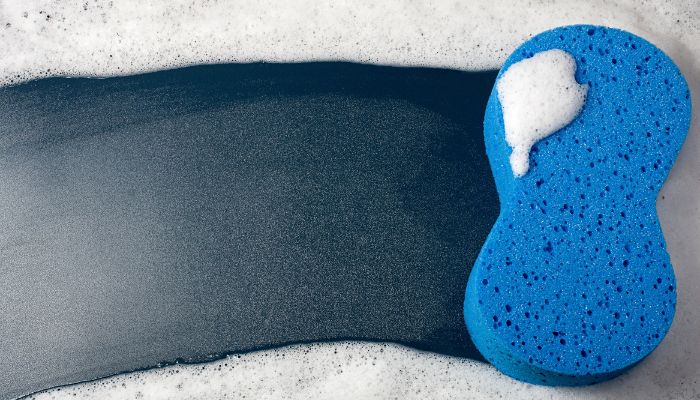We all know that keeping our kitchen clean is crucial, especially in the food service industry, where cleanliness isn’t a request but mandatory. Therefore, it’s no surprise that we are obsessed with cleaning and disinfecting everything from our countertops to utensils. However, your sponge is one seemingly harmless kitchen tool that may be harboring all sorts of dangerous bacteria.
Yes, that’s right, that absorbent little square that you use to scrub pots, pans, and dishes is a biohazard if the proper precautions aren’t in place. Knowing the dangers of using a dirty sponge to clean highlights the risk you’re putting yourself through with each use.
A Breeding Ground for Bacteria
Many things in a kitchen or bathroom can attract bacteria, but nothing more so than your trusted ally, the sponge.
Any sponge used for cleaning is the perfect environment for bacterial growth, with its crevices, pores, and absorbant nature. A sponge’s wet and moist environment provides an ideal breeding ground for bacteria to multiply.
Studies have found that a dirty sponge can contain up to 10 million bacteria per square inch, including E. coli, salmonella, and staphylococcus. Using a dirty sponge can lead to cross-contamination, spreading disease-causing pathogens to food, surfaces, and utensils.
These ailments are all too common when people use a sponge to wipe off a cutting board after cutting raw chicken and then use it on another surface.
Health Risks
Fostering foodborne illnesses, such as E. coli and salmonella, can cause serious damage to the most vulnerable. Using a dirty sponge poses various health risks for children, seniors, and people with weakened immune systems. The bacteria has many consequences, like food poisoning, stomach cramps, and skin infections. In severe cases, it can lead to hospitalization and long-term health problems.
Cleaning vs. Disinfecting
Many people believe washing a sponge with soap and water is sufficient to clean it. However, this is not entirely true; it only removes visible dirt and debris. You must go beyond that and disinfect it to ensure your sponge is thoroughly clean.
Disinfecting your sponge once a week with one part water and one part bleach kills harmful bacteria and prevents them from growing. Soak the sponge for five minutes before rinsing it out with cold water.
How To Keep Your Sponge Clean
Now that you know the dangers of using a dirty sponge, here are some tips to help you keep your sponge clean:
- Replace your sponge every two weeks
- Rinse your sponge with hot water after each use
- Let your sponge dry completely between uses
The sponge may seem like a harmless kitchen tool, but as the dangers of using a dirty sponge for cleaning prove, it can be a lethal weapon. By following the tips provided, you can help ensure your sponge is clean and safe. In the food service industry, cleanliness is crucial, and making sure your sponge is safe to use is essential in maintaining a clean kitchen; so, let’s take cleaning our sponges seriously and keep our kitchen and ourselves healthy.






